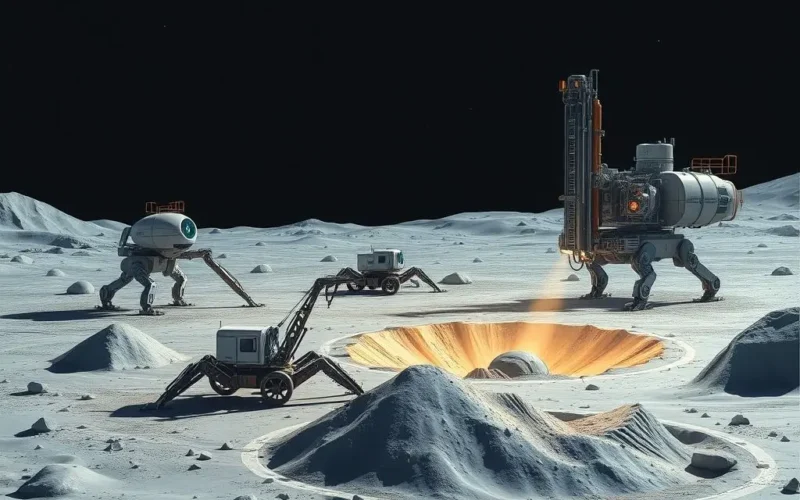Imagine not just *visiting* the Moon, planting a flag, and coming home. Imagine setting up a permanent address there. A place where people live, work, and push the boundaries of exploration and industry. Sounds like science fiction, right? Well, the journey to making lunar living a reality is less about warp drives and more about incredibly complex, down-to-Earth engineering – or perhaps, more accurately, down-to-Moon engineering. It’s a monumental technological puzzle with pieces ranging from cosmic ray shielding to making oxygen from rocks.
If you’ve ever paused to ponder the sheer audacity of building a home away from Earth, this quick dive into the essentials might just spark your cosmic curiosity. Take a look:
The video gives you a glimpse, but the reality is that every single aspect of terrestrial life, from breathing air to having a reliable Wi-Fi signal, needs to be engineered from scratch in the unforgiving lunar environment. So, what are the absolute must-haves, the foundational pillars of technology required to turn lunar dust into thriving human habitats?
Table of Contents
Shelter from the Storm (and Radiation and Micrometeoroids)
The Moon is not Earth. There’s no protective atmosphere or global magnetic field to shield inhabitants from constant solar and cosmic radiation, or from high-speed micrometeoroids. A basic tent won’t cut it. Future lunar habitats need robust shielding.
Early bases might use inflatable modules or pre-fabricated structures brought from Earth, but these would likely be covered with lunar regolith (Moon dirt and rocks) for protection. Thinking longer term, bases could be built partially or entirely underground, utilizing lava tubes or excavating beneath the surface layers. Another approach involves constructing habitats directly on the surface using local materials.
This brings us to a crucial concept…
ISRU: Living Off the Lunar Land
In-Situ Resource Utilization (ISRU) is perhaps the single most critical technology for sustainable lunar presence. Hauling everything from Earth is prohibitively expensive. ISRU means using what’s already on the Moon – lunar regolith, potential water ice, trapped gases – to meet the needs of the base.
Beyond simply piling regolith for shielding, ISRU involves more complex processes:
- Construction Materials: Sintering or 3D printing regolith to create bricks, building blocks, or even entire structures. Binding agents might be needed initially, but the goal is to use lunar materials directly.
- Oxygen Production: Lunar regolith is rich in oxides (like iron oxide, silicon dioxide). Various processes (e.g., electrolysis of molten regolith) can extract oxygen, vital for breathing air and potentially for rocket propellant oxidizer.
- Metal Extraction: Processes can also yield metals like iron, aluminum, and silicon, which could be used for manufacturing parts and structures locally.
ISRU dramatically reduces the mass that needs to be launched from Earth, making the entire endeavor economically viable in the long run.
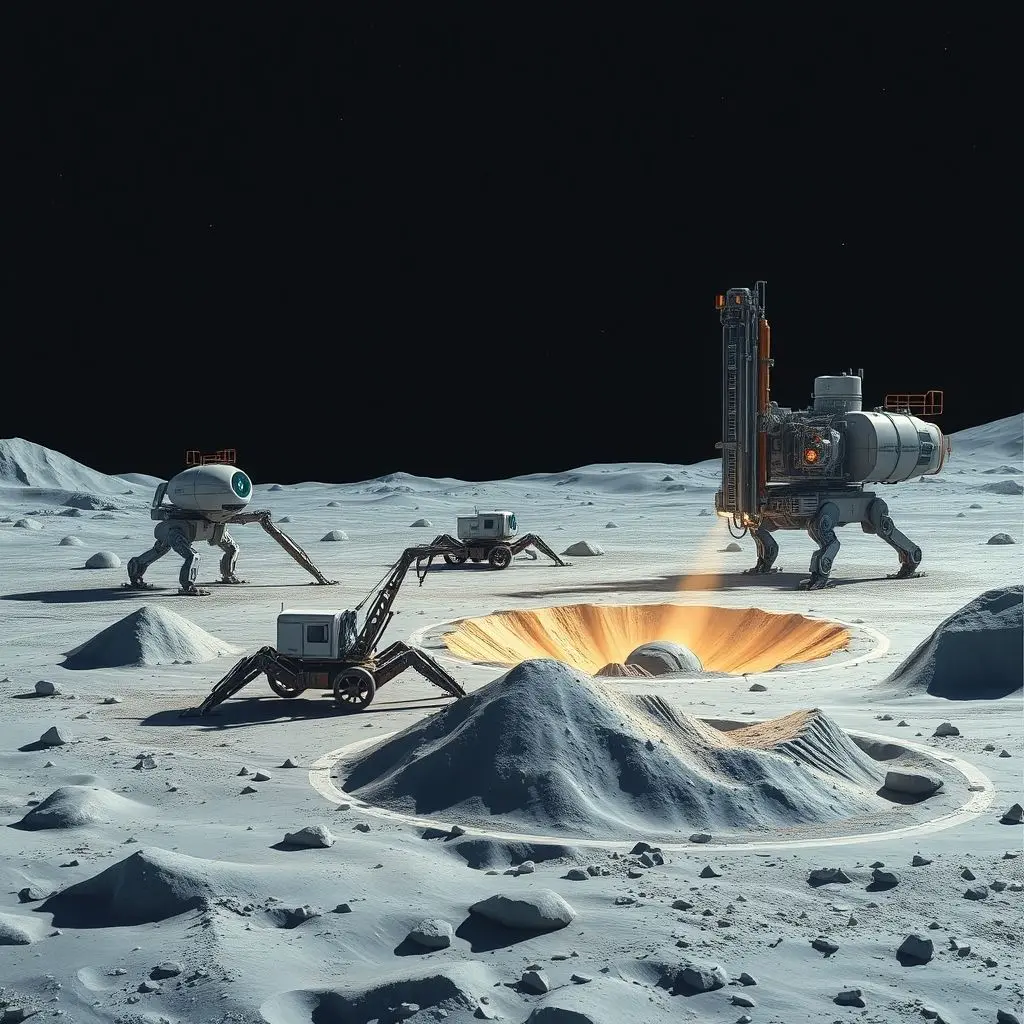
The Water Hunt: Ice is Life (and Fuel)
The discovery of significant water ice deposits, particularly in permanently shadowed craters at the lunar poles, was a game-changer. Water is essential for drinking, hygiene, and agriculture (if growing food locally). But it’s also a key component for rocket fuel.
Getting to this ice requires specialized drilling or excavation robots capable of operating in extremely cold, dark conditions. Once extracted, the ice needs to be melted, purified, and stored. Electrolysis of water (H₂O) yields hydrogen (H₂) and oxygen (O₂), both potent rocket propellants. This means a lunar base could potentially refuel missions heading further into the solar system, establishing the Moon as a critical transportation hub.
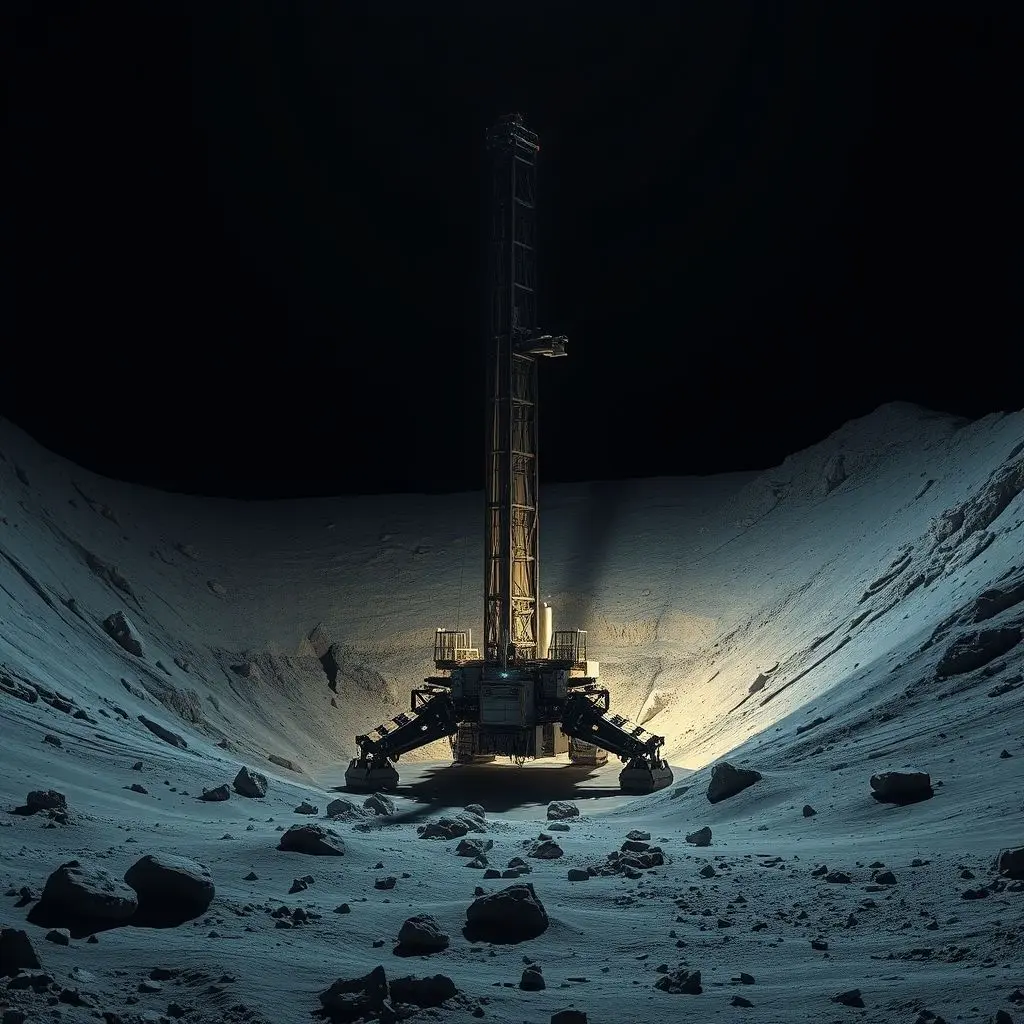
Powering the Lunar Outpost
Everything on the Moon needs power: life support, ISRU processes, communication, heating/cooling, transportation. The Moon has no atmosphere to scatter sunlight, making solar power attractive, but there are challenges:
- Lunar Night: Nights last about two Earth weeks, plunging temperatures and cutting off solar power entirely. Large-scale energy storage (advanced batteries, fuel cells) is needed, or a power source that doesn’t rely on the sun.
- Dust: Abrasive lunar dust clings to everything, degrading solar panel efficiency. Self-cleaning mechanisms or regular maintenance would be essential.
This makes nuclear fission power a strong contender for reliable, high-capacity lunar energy. Small modular reactors designed for space could provide continuous power regardless of day/night cycles or dust accumulation. While complex and requiring careful safety considerations, nuclear power offers the stability needed for a continuously operating base.
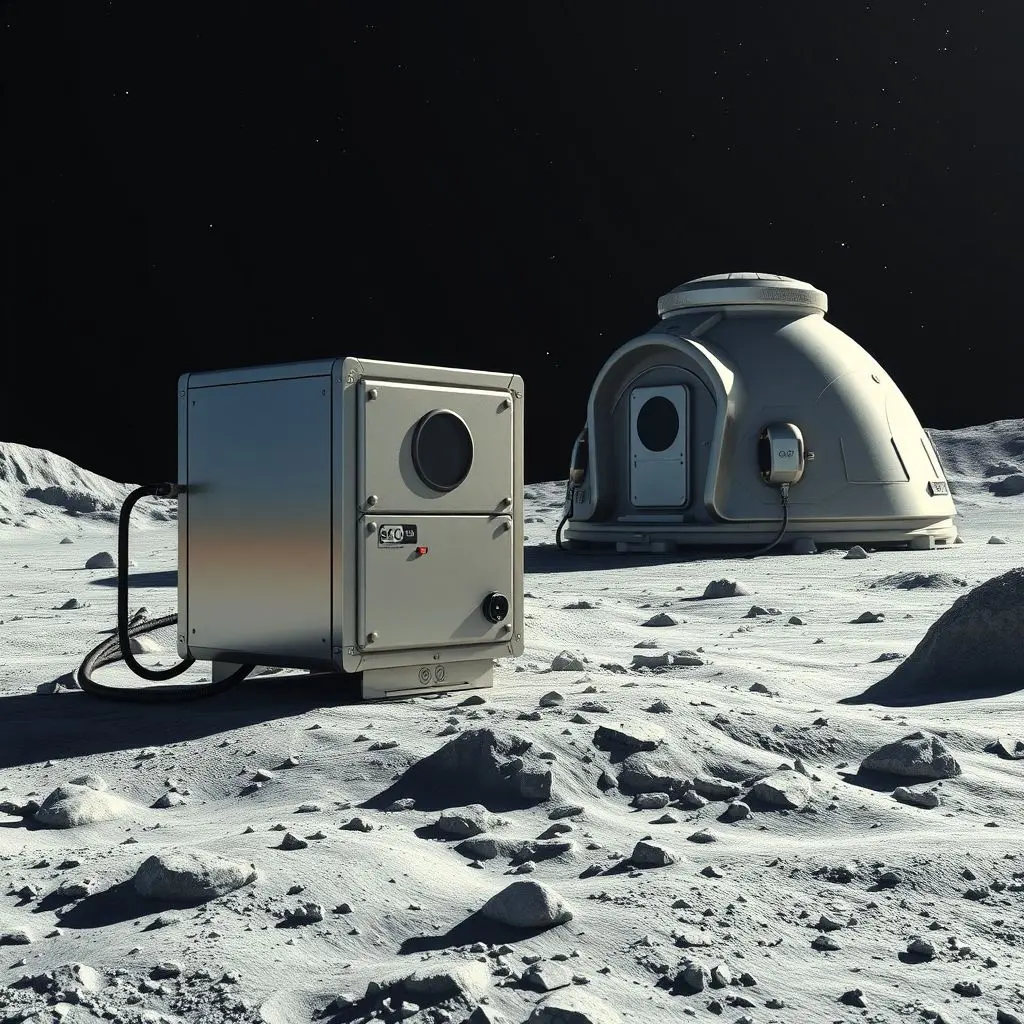
Getting Around: Specialized Mobility
Exploring the lunar surface, servicing remote equipment (like power plants or telescopes), and transporting resources requires specialized vehicles. Lunar rovers need to contend with:
- Extreme Temperatures: Swinging from scorching hot in sunlight to frigid in shadow.
- Dust: Highly abrasive and pervasive, requiring sealed components and dust mitigation strategies.
- Rough Terrain: Craters, rocks, and varying slopes.
- Radiation: Components must be radiation-hardened.
Future bases might also employ hopping robots or even short-range flyers for navigating particularly difficult terrain, utilizing that precious water ice as propellant.

Staying Connected: Communication is Key
A lunar base isn’t truly sustainable if it’s isolated. Constant, reliable communication with Earth is vital for scientific data transfer, operational support, crew health monitoring, and simple connection to home. This requires a robust communication infrastructure.
Currently, missions rely on networks like NASA’s Deep Space Network. For a permanent base, dedicated lunar communication relays (satellites orbiting the Moon) might be necessary to ensure line-of-sight transmission to Earth, especially for bases not on the Earth-facing side. High-bandwidth systems, potentially using laser communication technology, will be needed to send back massive amounts of data.
Maintaining Life: The Environmental Bubble
Beyond shelter and power, the base needs integrated life support systems to create a habitable environment:
- Atmosphere Management: Maintaining a breathable mix of oxygen and nitrogen at the correct pressure and temperature.
- Water Recycling: Capturing and purifying all wastewater, including humidity from the air, for reuse. This is a closed-loop system crucial for minimizing water brought from Earth or extracted from ice.
- Waste Management: Safely handling and potentially recycling or processing solid waste.
These systems are complex and require constant monitoring and maintenance, often relying on automation and robotics.
The Future is Built (on the Moon)
The technology for future lunar bases isn’t just about survival; it’s about enabling research, resource extraction, and preparing for further space endeavors. It requires innovative thinking in every engineering discipline, from materials science to robotics to artificial intelligence for autonomous systems.
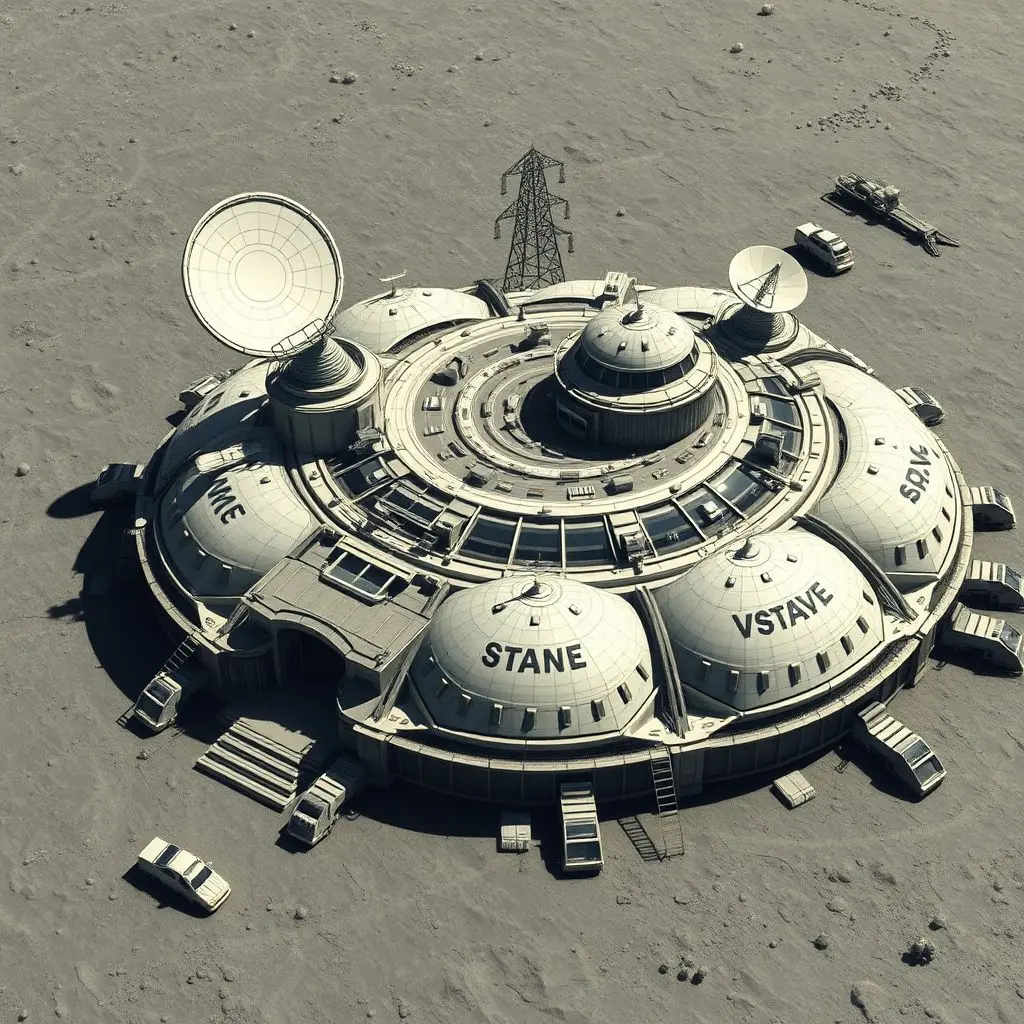
FAQs: Your Lunar Living Questions Answered
Got more questions about setting up shop on the Moon? Here are some common ones:
Q: Is this technology already available?
A: Much of the foundational technology exists (like life support systems from the ISS, basic rovers, solar power). However, adapting and scaling it for long-term, large-scale lunar use, especially ISRU and reliable lunar-specific power sources, requires significant further development and testing.
Q: How long would it take to build a base?
A: Initial, small outposts could be established relatively quickly, perhaps within a decade or two, focusing on essential survival tech. Building a truly self-sustaining, expansive base capable of supporting a larger population and industrial activity would likely take several decades.
Q: What about food?
A: Initially, food would be brought from Earth. Long-term sustainability will require developing lunar agriculture in controlled environments (like greenhouses), potentially using hydroponics or aeroponics, and possibly utilizing lunar regolith after processing. This also requires water, power, and specific light spectrums.
Q: Who is developing this technology?
A: Space agencies like NASA, ESA, and CNSA are heavily involved, alongside a growing number of private space companies (e.g., SpaceX, Blue Origin, Astrobotic, Intuitive Machines, and many others focusing on specific areas like ISRU or power). International collaboration is also crucial.
Looking Beyond the Horizon
Building a permanent home on the Moon is one of humanity’s most ambitious undertakings. It demands pushing the boundaries of technology across multiple fields. From using Moon dirt to build habitats and extract resources, to harnessing reliable power through nuclear systems, and ensuring constant connection with Earth, the challenges are immense but surmountable. The technological leaps required will not only enable our presence on the Moon but will undoubtedly yield innovations that benefit life back here on Earth. The dream of a lunar future is gradually taking shape, one piece of advanced tech at a time.
